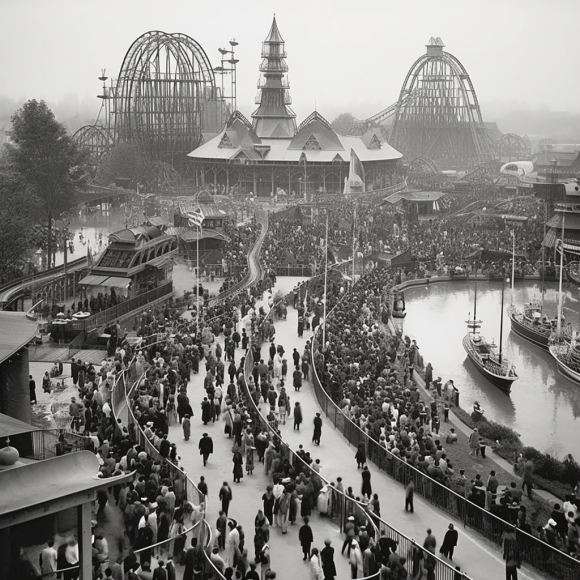Amusement parks have captured the imagination of people worldwide for decades, offering thrilling rides, entertaining shows, and memorable experiences. In this comprehensive guide, we will delve into the rich history of amusement parks, exploring their emergence, evolution, and the profound impact they have had on popular culture. Join us as we embark on a journey through time, uncovering the origins of amusement parks and their transformation into the modern, immersive entertainment destinations we know today.
- The Birth of Amusement Parks : Amusement parks trace their roots back to the 19th century, a period of industrialization and urbanization. The first true amusement park, Tivoli Gardens, opened in Copenhagen, Denmark, in 1843. Tivoli Gardens set the stage for subsequent parks by combining gardens, promenades, and entertainment attractions. This groundbreaking concept inspired the development of similar parks across Europe and the United States.
- Pioneering American Parks : In the late 19th and early 20th centuries, America witnessed the rise of several iconic amusement parks. Coney Island, located in New York, became a playground for millions, offering thrilling rides, sideshows, and fireworks displays. Other notable parks, such as Luna Park and Steeplechase Park, further fueled the popularity of amusement parks in the United States.
- Innovations and Technological Advancements :The 20th century brought significant advancements in amusement park technology. The introduction of roller coasters, Ferris wheels, and other mechanical rides provided adrenaline-pumping experiences for park visitors. Innovations in lighting, sound systems, and animatronics added a new level of realism and excitement to attractions, creating immersive environments for park-goers.
- The Golden Age of Amusement Parks : The mid-20th century marked the golden age of amusement parks, with the proliferation of large-scale parks across America. Disneyland, opened in 1955 by Walt Disney, revolutionized the industry by combining storytelling, detailed theming, and cutting-edge attractions. Disneyland’s success paved the way for the creation of other Disney parks worldwide and inspired a new era of immersive and family-oriented amusement parks.
- Regional and Themed Parks : Following Disneyland’s triumph, regional and themed parks emerged as popular alternatives to the Disney model. Busch Gardens, Universal Studios, and Six Flags are among the iconic parks that developed unique themes, such as animal conservation, movie magic, and thrill rides. These parks catered to diverse audiences and provided different experiences, contributing to the evolution of the amusement park landscape.
- Modern Era: Integration of Technology: he advent of the digital age brought about significant transformations in amusement parks. The integration of computer-generated imagery (CGI), virtual reality (VR), and augmented reality (AR) enhanced the interactivity and immersion of rides and attractions. Cutting-edge technologies, such as RFID wristbands, mobile apps, and queue management systems, revolutionized guest experiences, making them more convenient and personalized.
- Environmental Sustainability and Cultural Relevance: In recent years, amusement parks have placed greater emphasis on environmental sustainability and cultural relevance. Many parks have adopted eco-friendly practices, such as renewable energy sources, recycling programs, and conservation initiatives. Additionally, parks now incorporate diverse cultural themes, promoting inclusivity and reflecting the global nature of their audiences.
The history of amusement parks is a testament to human creativity, innovation, and the universal desire for entertainment. From their humble beginnings as simple pleasure gardens to the technologically advanced and culturally relevant destinations they are today, amusement parks have evolved in response to changing times and societal preferences. As we look to the future, these immersive playgrounds will continue to captivate and inspire generations to come.



